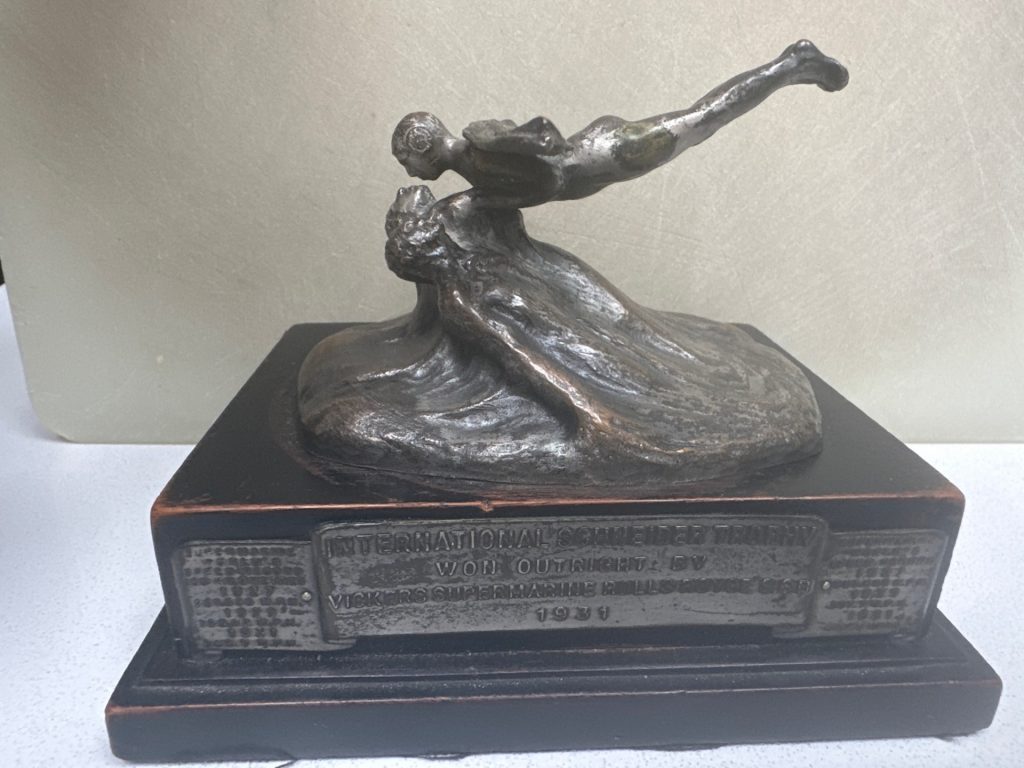Schneider Trophy Overview
The Coupe d’Aviation Maritime Jacques Schneider, commonly called the Schneider Trophy or Schneider Prize, was a trophy awarded annually (and later, biannually) to the winner of a race for seaplanes and flying boats.
Announced in 1912 by Jacques Schneider, a French financier, balloonist and aircraft enthusiast, the competition offered a prize of approximately £1,000. The race was held twelve times between 1913 and 1931. It was intended to encourage technical advances in civil aviation but quickly became a contest for pure speed. However, the race was significant in advancing aeroplane design, particularly in the fields of aerodynamics and engine design, and would show its results in the best fighters of World War II, including the iconic Supermarine Spitfire. It is also demonstrated between the winning speed in 1913 which was 45 mph and the winning speed of 380 mph in 1931.
The race each year was hosted by the previous winning country. The races were supervised by the Fédération Aéronautique Internationale and the aero club in the hosting country. If a aero club won three races in five years, they would retain the trophy.
The first competition was held on 16 April 1913, at Monaco. It was won by a French Deperdussin at an average speed of 73.56 km/h (45.71 mph).
The British won in 1914 with a Sopwith Tabloid at 139.74 km/h (86.83 mph).
After a break for World War I, the competition resumed in 1919 at Bournemouth where an Italian team won. They were later disqualified and the race was voided. In 1920 in Venice no other nation entered so the Italians once gain hosted and won in 1921 when the French entry did not start.
After 1921, an additional requirement was added: the winning seaplane had to remain moored to a buoy for six hours without human intervention.
In 1922 in Naples the British and French competed with the Italians. The British private entry, a Supermarine Sea Lion II, was the victor.
The 1923 trophy, contested at Cowes, went to the Americans
In 1924 there was no competition as no other nation turned out to face the Americans.
In 1925 at Chesapeake Bay the Americans won again, ahead of the British Gloster III and the Italian entry. Two British planes did not compete as both R. J. Mitchell’s Supermarine S.4 and the other Gloster III were damaged before the race. Footage of the Captain Broad and the Gloucester Napier III at Calshot can be viewed on this site: here
In 1926, the Italians returned with a Macchi M.39 and won against the Americans at Hampton Roads.
In 1927 at Venice there was a strong British entry with government backing and RAF pilots provided for Supermarine, Gloster, and Shorts. Supermarine’s Mitchell-designed S.5s took first and second places. You can read more about this competition: Here
1927 was the last annual competition, the event then moving onto a biannual schedule to allow for more development time.
In 1929, at Calshot, Supermarine won again in the Supermarine S.6 with the new Rolls-Royce R engine with an average speed of 528.89 km/h (328.64 mph). Both Britain and Italy entered two new aircraft and a backup plane from the previous race.
In 1931 the British government withdrew support, but a private donation of £100,000 from Lucy, Lady Houston, allowed Supermarine to compete and win on 13 September against only British opposition, with reportedly half a million spectators lining the beachfronts. The Italian, French, and German entrants failed to ready their aircraft in time for the competition. The remaining British team set both a new world speed record (610 km/h (380 mph)) and won the trophy outright with a third straight win. The following days saw the winning Supermarine S.6B further break the world speed record twice, making it the first craft to break the 400 mph barrier on 29 September at an average speed of 655.8 km/h (407.5 mph).
Development of the other entrants did not cease there. The proposed Italian entrant (the Macchi M.C.72) which pulled out of the contest due to engine problems later went on to set two new world speed records. In 1934 it broke the 700 km/h barrier with an average speed of 709.202 km/h (440.678 mph). This speed remains the fastest speed ever attained by a piston-engined seaplane.


